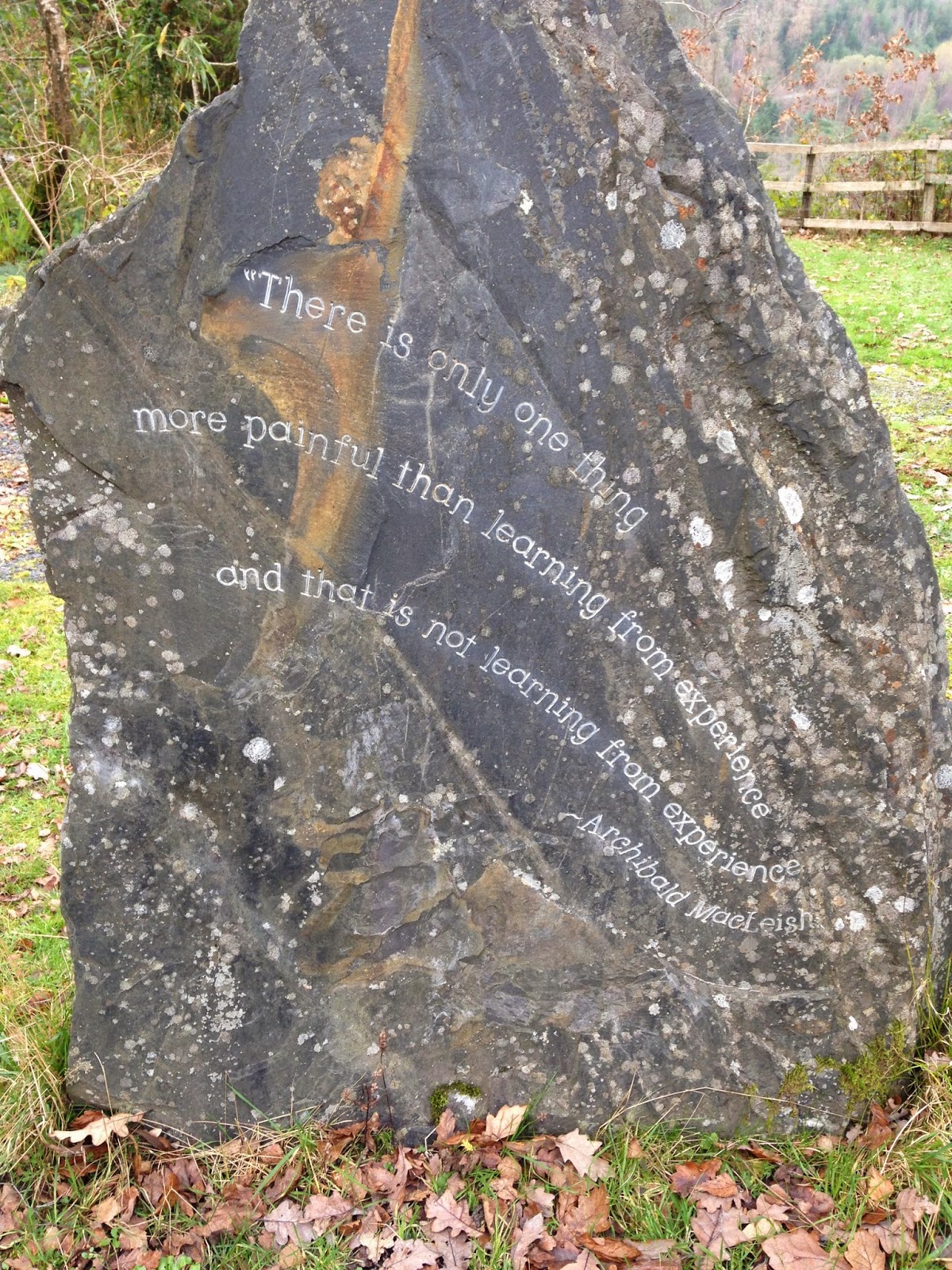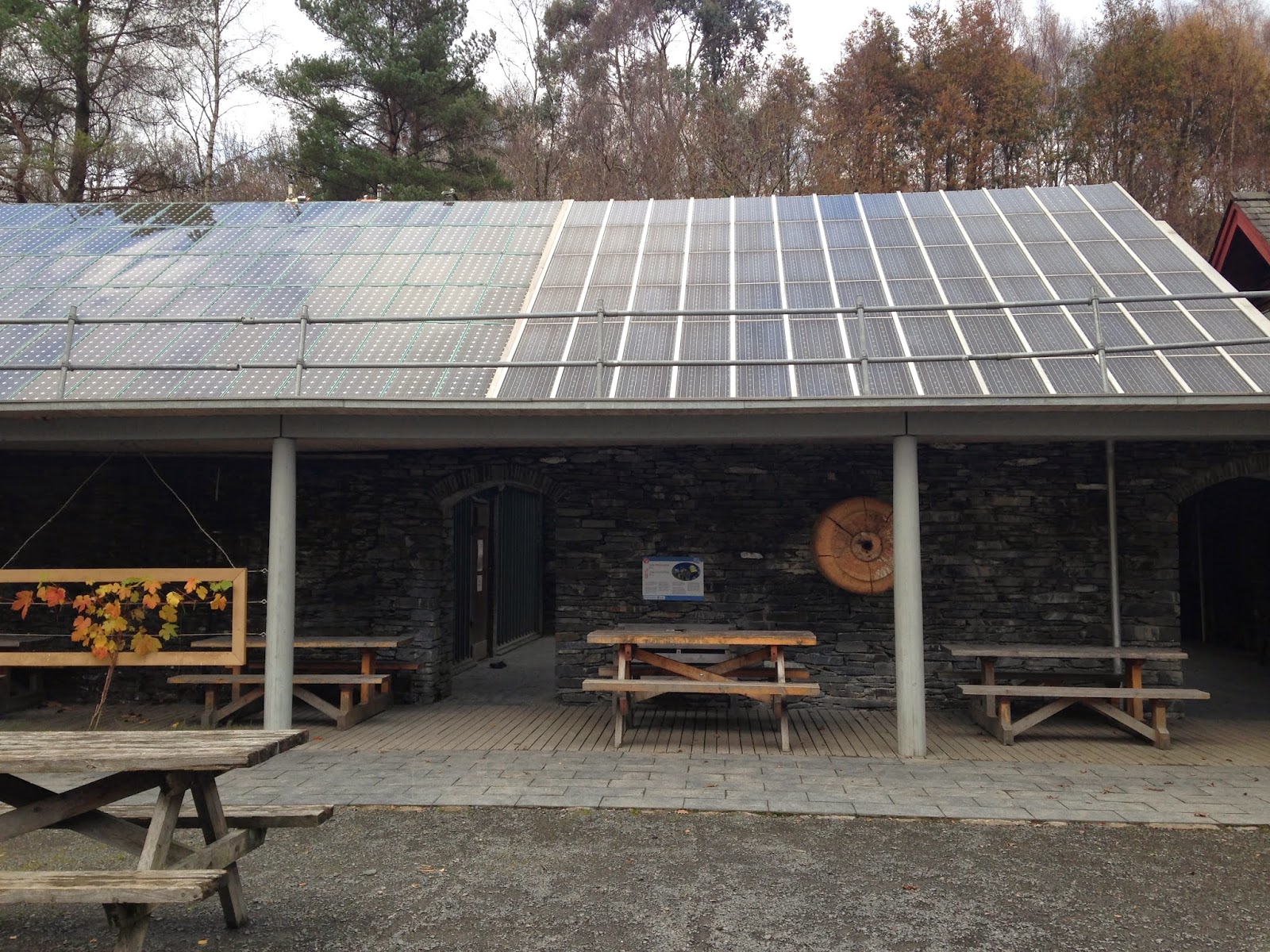
The Centre of Alternative Technology is perched on the top of an abandoned shale quarry located within the idyllic town of Machynlleth (Powys, Mid-Wales), surrounded by a picturesque landscape and plenty of sheep, the centre contributes an alternative green perspective on potential lifestyles. I found that the centre clearly conveyed its intended message, with credible information that prominently supported both its sustainable ideology as well as its intentions towards the Zero Carbon Britain project.
Throughout the day I was impressed and astounded by it's commitment towards a greener, more environmentally friendly future, automatically resulting in more in depth exploration of the site. The introductory film on CAT contributed a detailed variety of information that enabled me to fully understand the purpose of the centre. Below are the notes I took whilst viewing the video...
- There has been an increase in climate issues over the years that have not gone unnoticed.
- CAT was founded in 1974 and built on an abandoned quarry.
- The conservation of finite resources is imperative.
- They aim to inspire, inform and enable alternative solutions.
- Their electricity is generated from the sun, wind, water and trees, all of the energy from these elements are collected and stored in a micro-grid.
- Their water system generates electricity, additionally they utilise sand filters and UV lighting to clean water that can then be drank. The water they use is recycled by into the river.
- They provide residential courses.
- The WISE Building is made from renewable materials and is designed for low energy consumption.
- They have a free information service.
- Over 8,000 people pioneering as a result of CAT.
- They have 120 staff that are self funded.
- Their Zero Carbon Britain project is a sustainable vision and is the 1st fully integrated solution to climate change.
I found the entire experience increasingly engaging, with every section of the site generating an additional thought on the vast potential of sustainable living, however, 'The Eco House' was my favourite part of the entire centre as I found it immensely informative as well as visually intriguing. The fact that the structure was conveyed as a physical house made it even more fascinating as I wandered between the few rooms looking for facts that were placed in baths and on fridges (for example). Below are the notes I took whilst I was within the Eco House...
- A bath utilises 3x more water than a shower.
- Microwave cooking is more eco-friendly than oven cooking, however, the meals you cook in a microwave are less eco-friendly than the meals you cook in an oven.
- Making 1 desktop computer uses 1.8 tons of material.
- Food production is responsible for around 10% of UK greenhouse gas emissions.
- Spray head taps can save up to 80% of water.
- The bathroom takes 60% of your water in the home.
- To boil a standard kettle uses 2500 WATS, a singular solar panel produces around 1500 WATS, indicating that you would require at least 2 solar panels producing their highest wattage (1500 each) just to cover the energy used to boil a standard kettle once.
- Gas hobs use less energy than electric ones.
- Gas oven causes the release of less carbon dioxide than electric ovens. If you turn the oven off 5 minutes before your dinner is done you would save energy (as the food would continue to cook for the final 5 minutes).
- If you place a reflective panel behind your radiator it would make it more efficient, this is because the heat from the radiator would be reflected off of the reflective panel resulting in the room being heated faster, rather than (if the reflective panel isn't there) some of the heat would be absorbed into the brick that the radiator is mounted on.
- Cut flowers from your garden has no eco-footprint.
- A full freezer is more efficient and for each minute a fridge door is open, it requires 3 minutes to cool back down.
- If you turn your thermostat down by 1 degree it will save 10% of your heating bill, most people are comfortable at 18 degrees Celsius.
- The number of children with asthma and allergies has risen by 50% in the last 30 years. Pollution in the home is not helping.
Overall, the visit was highly beneficial as it presented a functioning example of individuals attempting to make a difference that will benefit both the world's populous and the environment. They highlighted a diversified alternatives in building and sustainability, my favourite being their walls made by compact earth, these were both functional and surprisingly beautiful as the different tons of brown layered to provide a rustic look that seemed to illuminate under the lighting. Additionally, structures such as the Eco House highlight the factors the most of us either don't know or choose to ignore, the centre makes these prominent features that cannot be disregarded for much longer. It illustrates that climate change will continue to worsen if we don't unite, act and make the relevant sacrifices like turning down the thermostat and installing reflective panels, these acts may not be 'attractive' to some but they will contribute to the Zero Carbon Britain that the future requires.
Gallery - My Photos taken at The Centre of Alternative Technology















































No comments:
Post a Comment